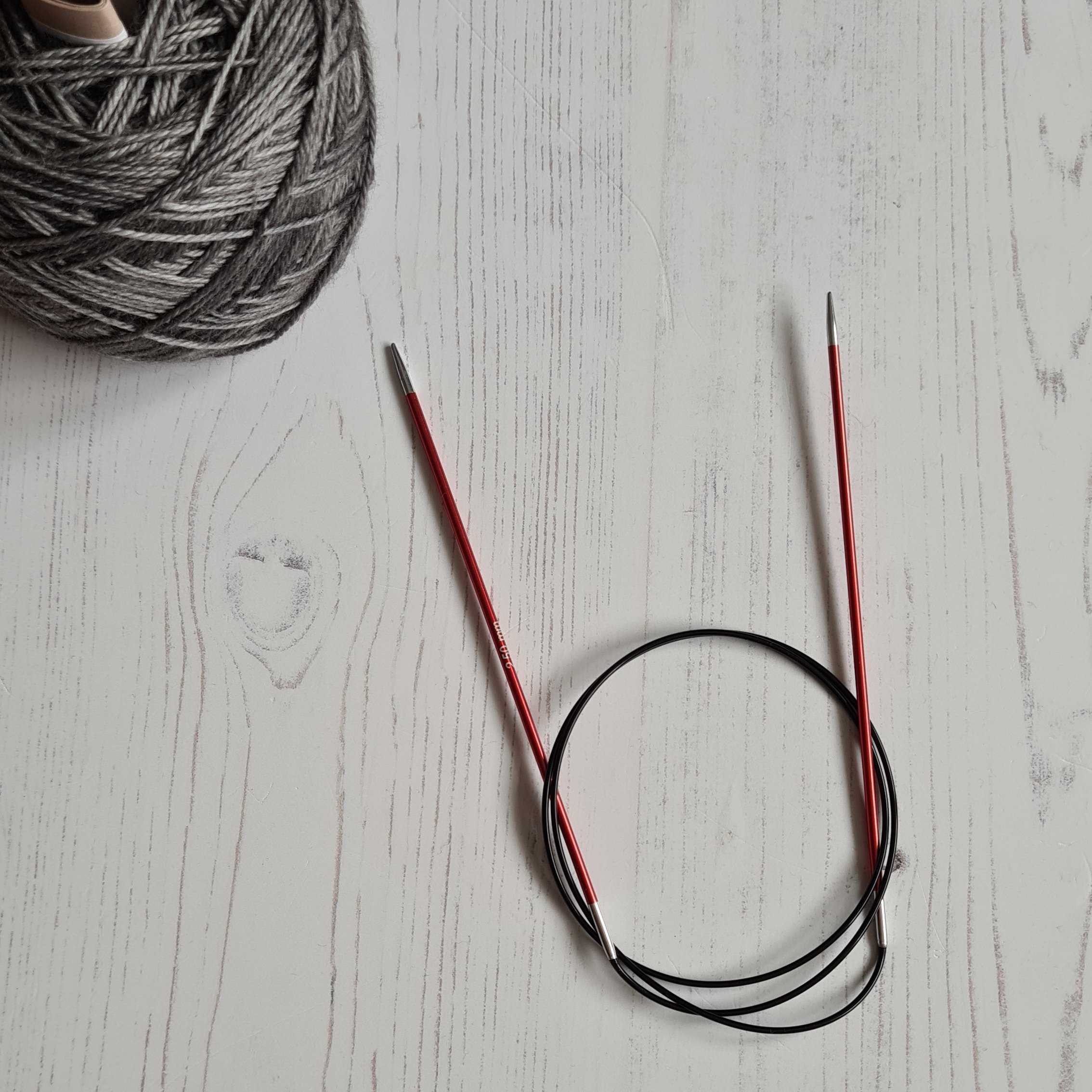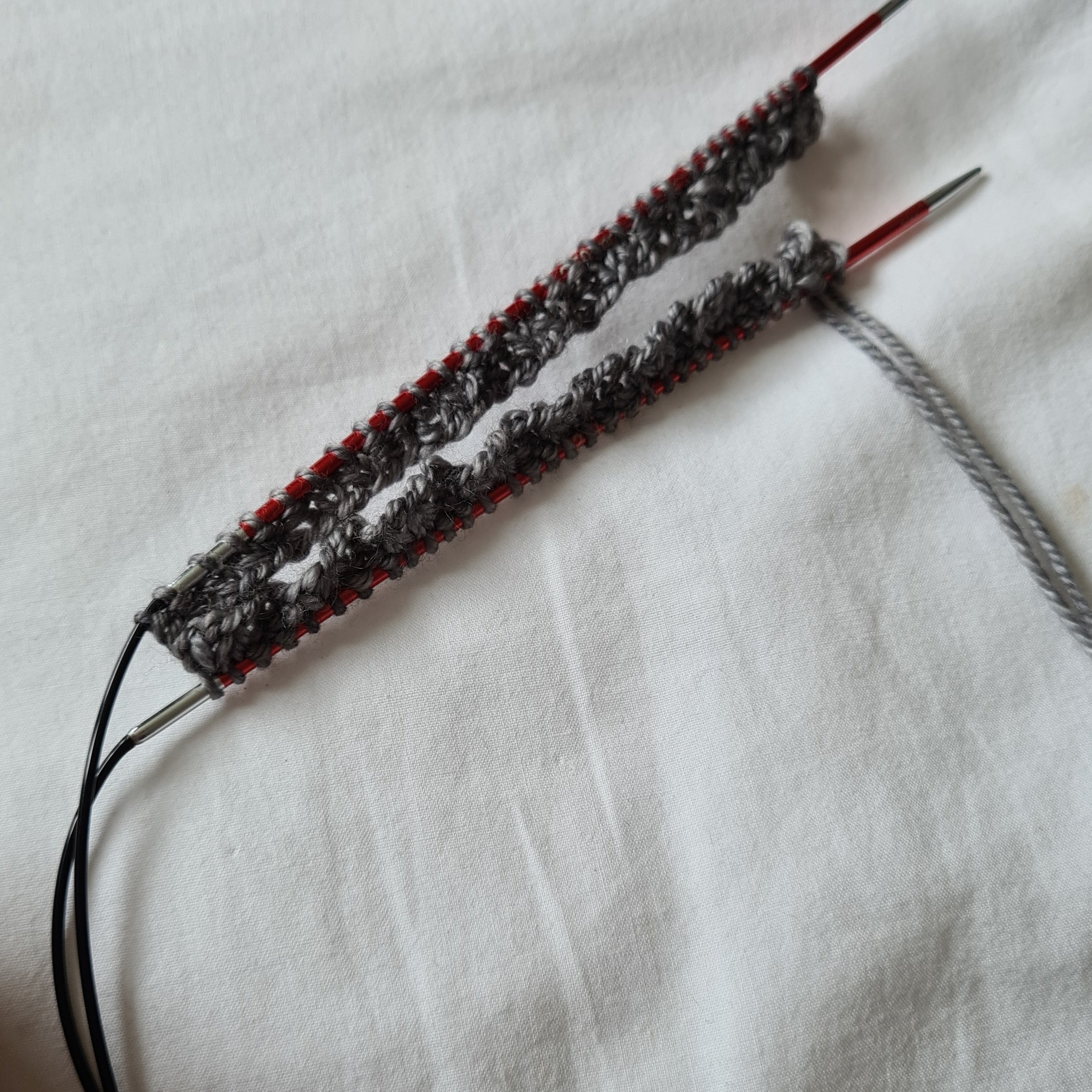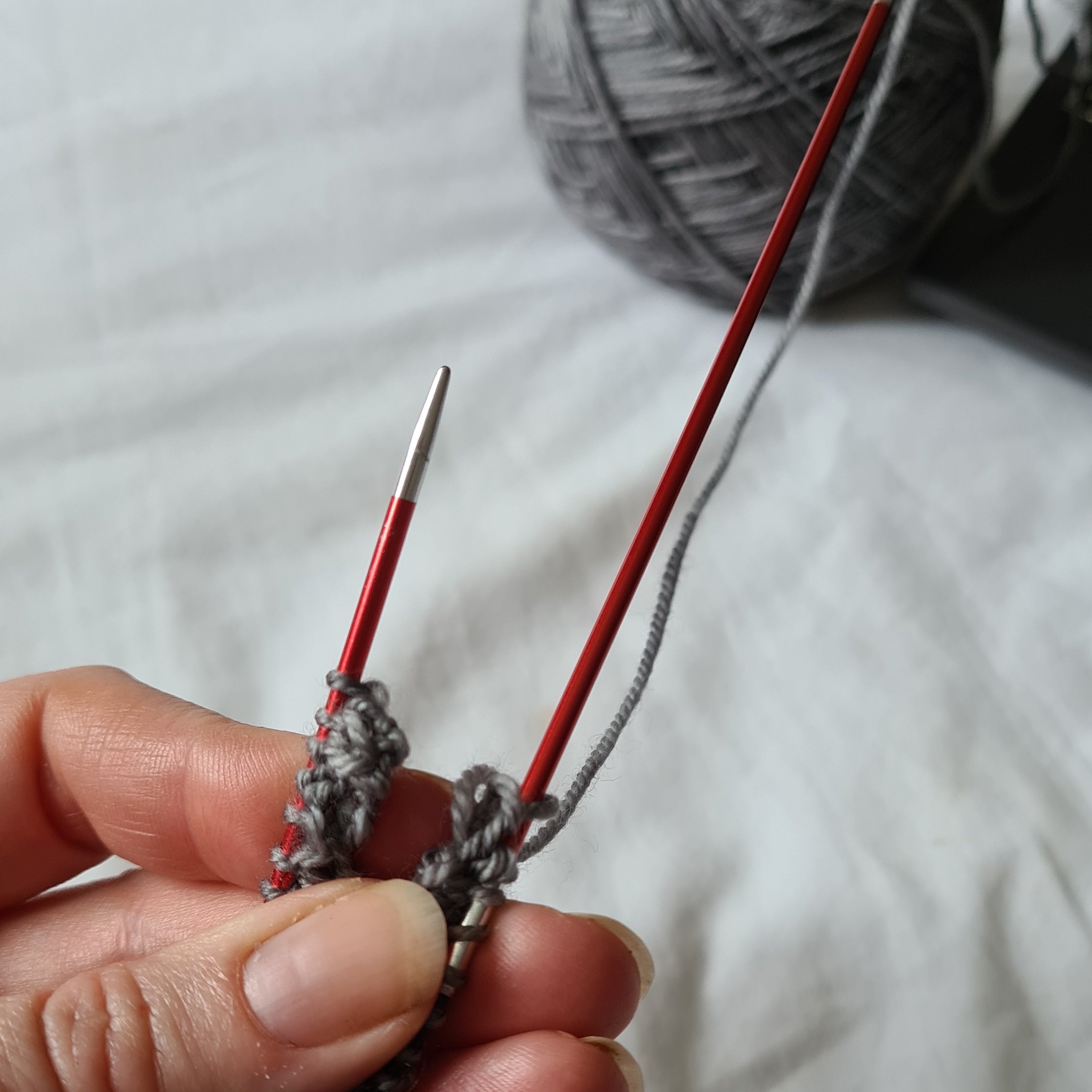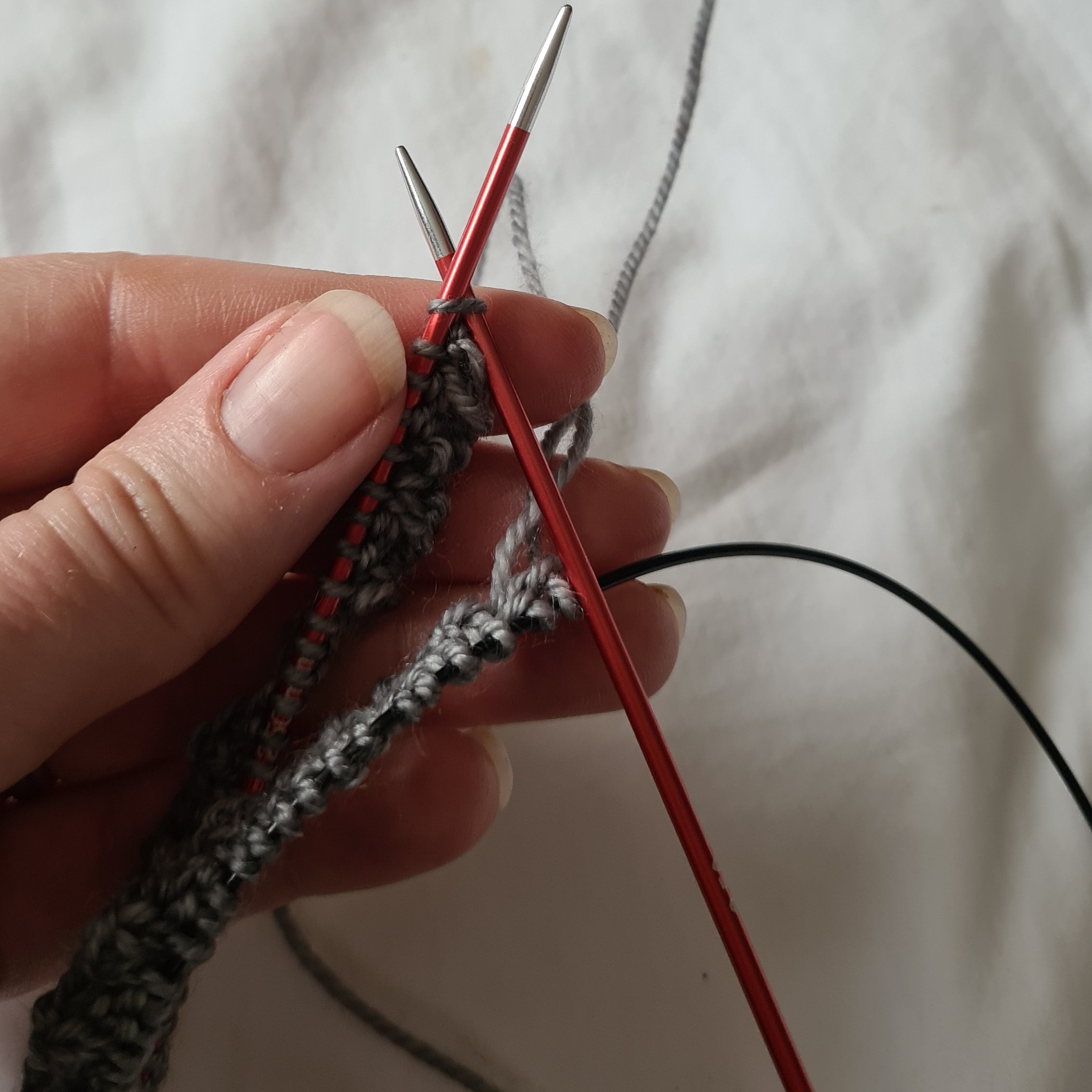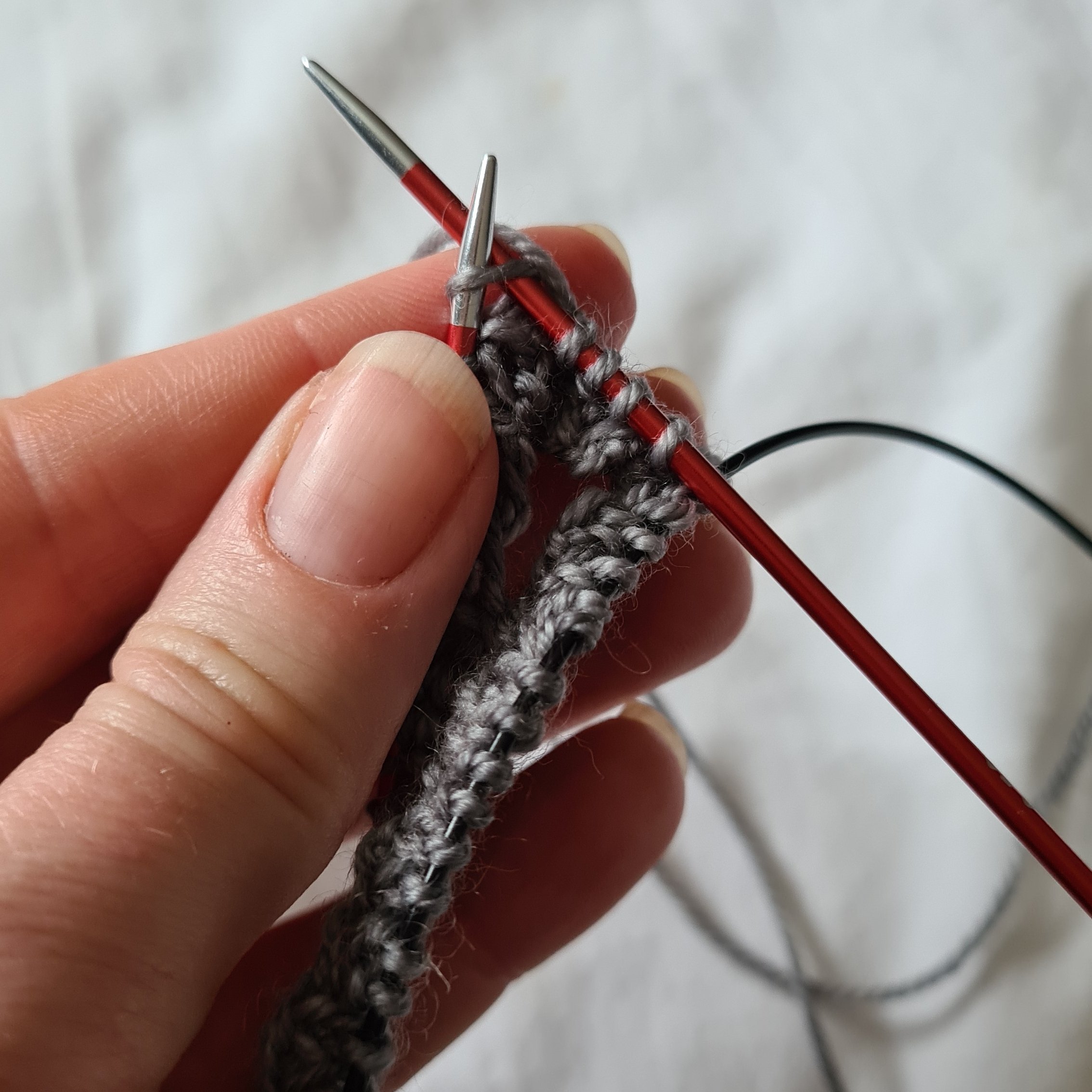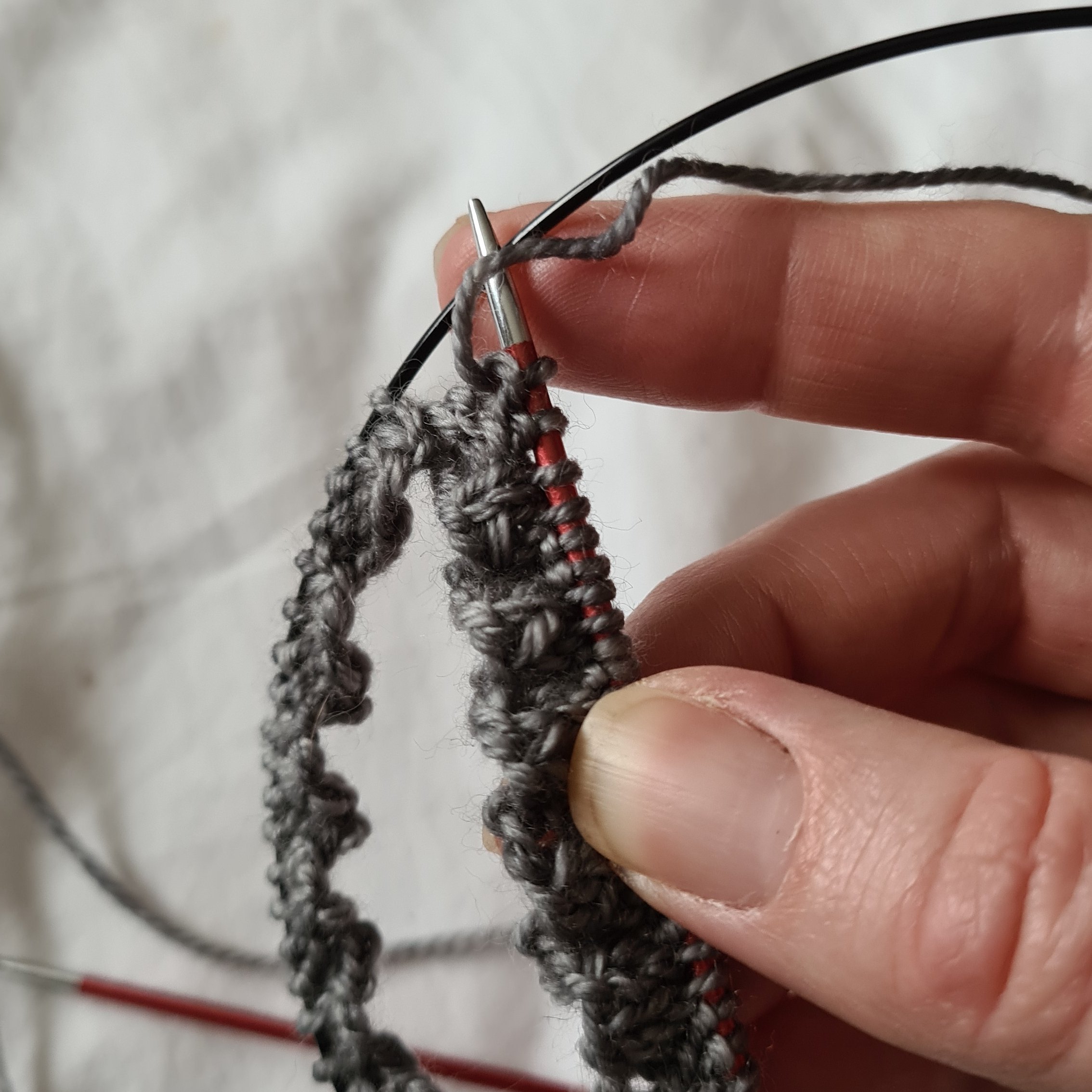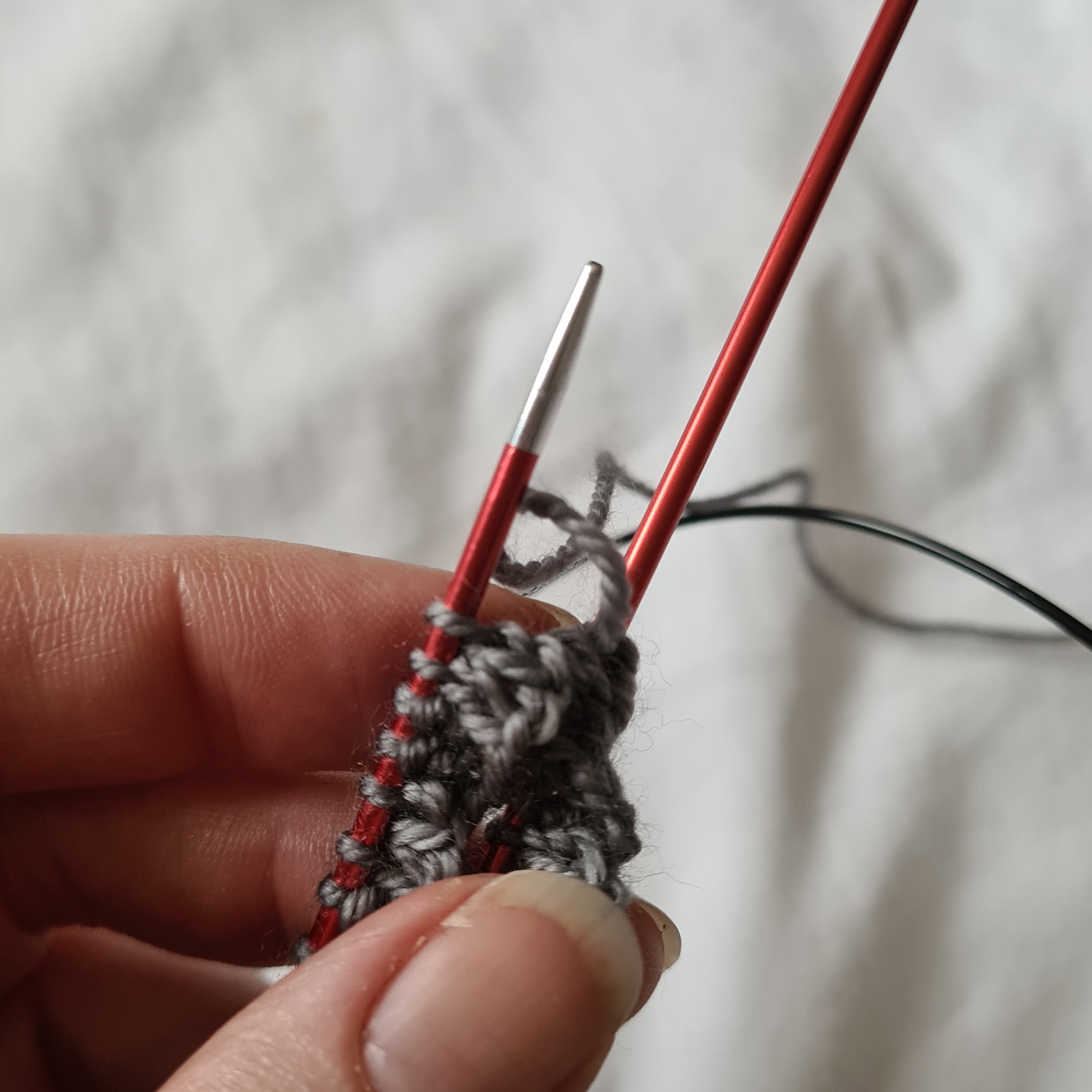Hoar Frost socks
I used to teach a class on this, and the most common response after I had run through the basics and a short demo was “oh, is that all it is”.
It really is quite straightforward once you understand the principle, but like many things it sounds a lot more complicated than it actually is.
Essentially it is another way of knitting a tube in the round, along with DPNs and small circulars. It’s just another technique - with a slightly fancier name.
All you need is a circular needle with a long cable. For socks I like to use 2.5mm needles with an 80cm long cable.
It is important that the cable be long enough. 60cm is the bare minimum and personally I find the 100cm cables a bit too long - the extra loops always seem to get in my way.
The only other caveat I would add is that the cable itself needs to be reasonably flexible. Yes, you probably could use that grey plastic one that came free on the front of a magazine once but it is unlikely to be a pleasurable experience.
HOW TO MAGIC LOOP:
Cast on the required number of stitches - for socks for example - 64..
Work 2 rows of rib (not essential but it makes it easier to join.
Identify the halfway point - 32 sts - and slide stitches onto the cable portion.
Pull the cable through the halfway point to make a long loop. Stop when the two sets of stitches are resting on the needle tips.
Align the stitches with the cast on edge facing inwards and the tips facing away from you.
Hold working yarn in right hand and slide the stitches on the RH needle back down onto the cable.
Insert the now free RH needle tip into the first stitch on the LH needle and work in rib for 32 stitches.
Once you’ve worked these 32 stitches, you’ll have them on the RH needle, with the 2nd set of stitches still on the cable. Slide them back up to the LH needle.
With your right hand, pull the RH needle tip away from you allowing the stitches on the RH needle to slide back onto the cable.
This frees up with RH needle to work across the 2nd set of stitches.
Points to remember: Once you’ve worked across half the stitches always slide both sets of stitches back onto the needle tips. Then you can pull the RH needle out, sliding those stitches safely back onto the cable. This ensures that your stitches stay in two, neat manageable halves. All you are doing is working one half of the stitches, pulling the cable through and then working across the 2nd half.
You can use magic loop to knit anything that requires a tube to be knit in the round. It lends itself particularly well to socks especially if they have a pattern as one needle will hold the plain sole/back of leg stitches whilst all the pattern action happens on the other needle. Magic loop can also be used for mitts, hats - I often use it for baby hats when there aren’t enough stitches to stretch around my cable, or indeed sleeves.
The world is your (knitting) oyster.

